Heart disease remains a global health crisis, often progressing silently for years. While annual check-ups are crucial, especially for individuals with diabetes, high blood pressure, or obesity, your skin can also reveal subtle yet significant clues about your heart health. Beyond the typical chest pain and shortness of breath, here are seven skin-related signs that could indicate underlying heart issues. Note that these signs are not exclusive to heart disease and warrant a consultation with a healthcare professional for accurate diagnosis.
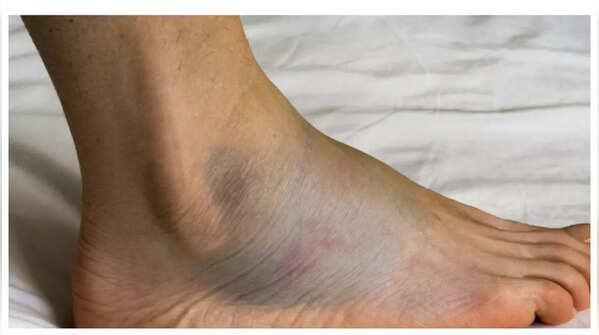
Swelling, particularly in the feet, ankles, and lower legs, is a common sign of heart disease. This occurs when the heart's pumping efficiency decreases, leading to fluid accumulation in the tissues. You might notice tighter shoes or indentations on the skin after wearing socks. In severe cases, the swelling can extend to the upper legs and groin. If accompanied by fatigue or shortness of breath, seek medical attention promptly.
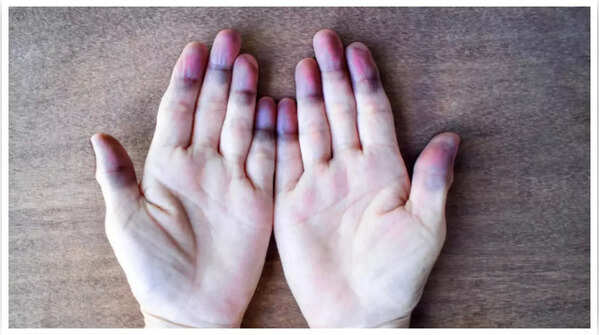
If your fingers or toes turn blue or purple (cyanosis) and fail to regain their normal color upon warming, it suggests inadequate oxygen transport in your blood due to a struggling heart. This condition may indicate blocked blood vessels or impaired heart function. Immediate medical evaluation is crucial as oxygen deprivation can harm the skin and tissues.
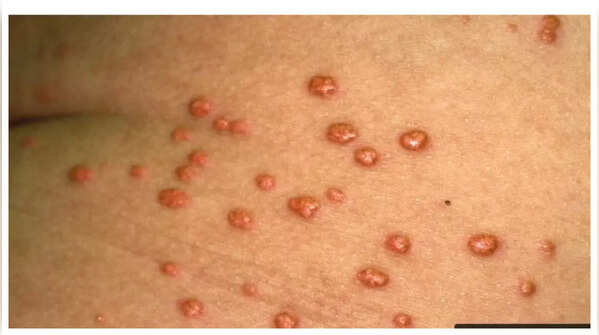
The appearance of yellow or orange, waxy bumps or plaques on the skin, especially around the eyes, elbows, knees, or the back of legs, signals high cholesterol or triglyceride levels. These painless fatty deposits indicate a heightened risk of heart disease. If observed, it is essential to have your cholesterol levels checked and managed.
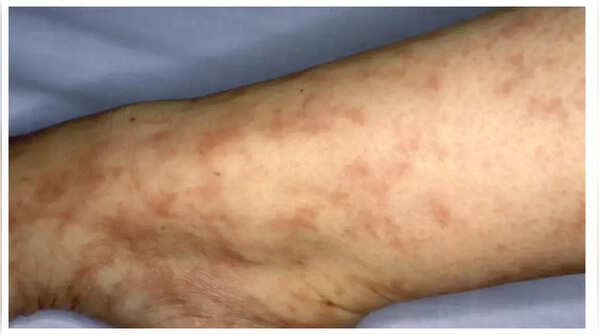
A web-like or net-like purple or blue pattern on the skin, primarily on the legs, might indicate cholesterol embolization syndrome. This condition results from small arteries being blocked by cholesterol crystals, leading to reduced blood flow. It is not a rash or infection but a serious sign that needs immediate medical consultation due to its association with severe heart conditions.
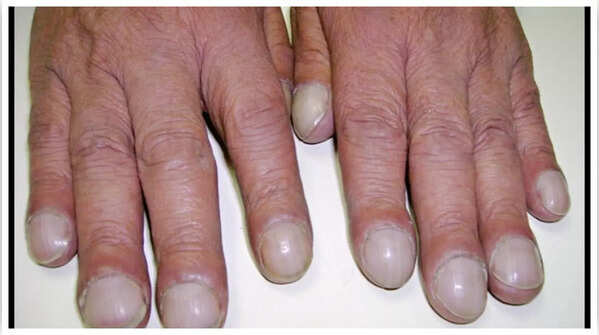
Clubbing, characterized by the rounding and swelling of the fingertips or toes, causes the nails to appear bulbous or curve downward. This change can indicate low oxygen levels in the blood, often linked to heart or lung diseases. Monitor any alterations in nail shape and consult a doctor if changes occur.
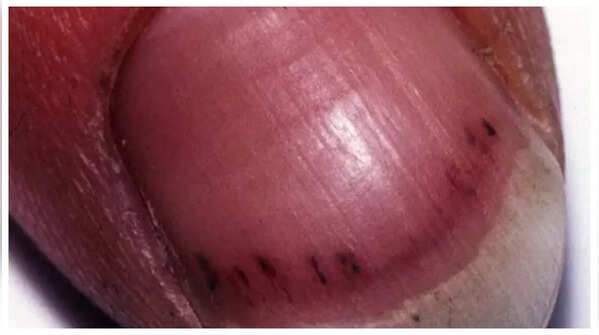
Tiny red or purple lines resembling splinters beneath the nails can indicate damage to small blood vessels. These lines can be a sign of infective endocarditis, a serious heart infection. They can persist for several days and should not be overlooked, particularly if accompanied by other symptoms like fever or fatigue.
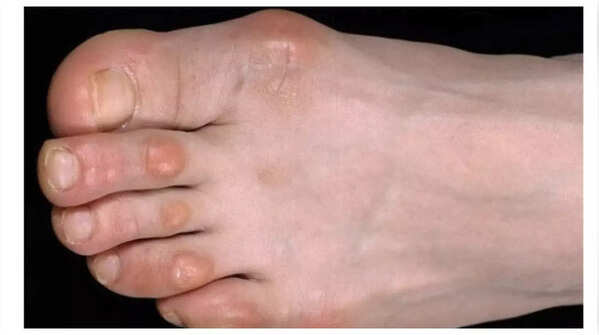
Painful, red or purple lumps on the fingers or toes, known as Osler nodes, can signify a heart infection or other heart problems. These lumps may appear and disappear, lasting for hours or days. Seek immediate medical advice if you observe such painful bumps.
Disclaimer: This article is for informational purposes only and does not substitute professional medical advice. Always consult a healthcare provider for any health concerns.
Newer articles
Older articles
 5 Overlooked Warning Signs of Colon Cancer: Early Detection Saves Lives
5 Overlooked Warning Signs of Colon Cancer: Early Detection Saves Lives
 Shukla's ISS Arrival Heralds New Era for Indian Space Exploration; Gaganyaan Mission Looms
Shukla's ISS Arrival Heralds New Era for Indian Space Exploration; Gaganyaan Mission Looms
 Vijay Sethupathi Apologizes Amid Controversy Over Son Surya's Film 'Phoenix'; Thalapathy Vijay's Support Revealed
Vijay Sethupathi Apologizes Amid Controversy Over Son Surya's Film 'Phoenix'; Thalapathy Vijay's Support Revealed
 Android Security Alert: Government Warns of Critical Flaws Exposing User Data
Android Security Alert: Government Warns of Critical Flaws Exposing User Data
 Smith Eyes Grenada Test Return After Injury Layoff
Smith Eyes Grenada Test Return After Injury Layoff
 Ashada Gupt Navratri 2025: Dates, Significance, and How to Observe This Hidden Festival
Ashada Gupt Navratri 2025: Dates, Significance, and How to Observe This Hidden Festival
 Skin Deep: 7 Warning Signs on Your Skin That Could Signal Heart Trouble
Skin Deep: 7 Warning Signs on Your Skin That Could Signal Heart Trouble
 Staying Hydrated May Significantly Lower Risk of Heart Failure, New Study Suggests
Staying Hydrated May Significantly Lower Risk of Heart Failure, New Study Suggests
 Moto G54 Price Slashed in India: Check Out the New, Lowered Costs
Moto G54 Price Slashed in India: Check Out the New, Lowered Costs
 Gambhir Sidelines Pant's Twin Tons After India's Test Loss, Emphasizes Team Performance
Gambhir Sidelines Pant's Twin Tons After India's Test Loss, Emphasizes Team Performance